 What do you get when you combine Roller Blades, Samurai Swords and Bongos? A terrible mess of a movie called The Roller Blade Seven, that’s what.
What do you get when you combine Roller Blades, Samurai Swords and Bongos? A terrible mess of a movie called The Roller Blade Seven, that’s what.
THE ROLLER BLADE SEVEN
USA, 1991, Donald G. Jackson
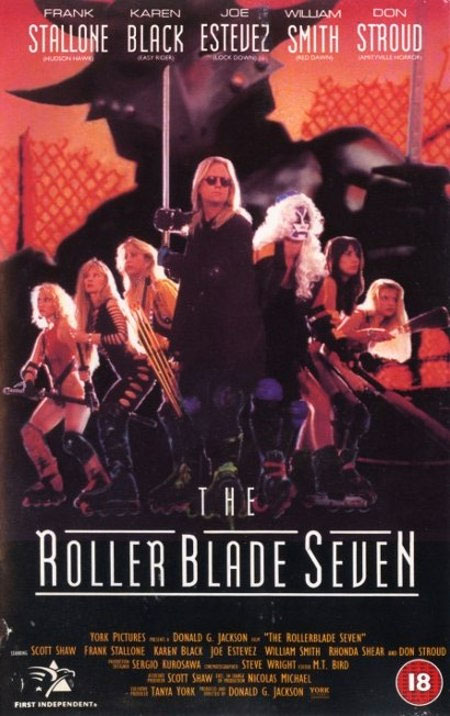
I assume this is exactly what filmmakers Donald G. Jackson (1988’s Hell Comes to Frogtown) and Scott Shaw told themselves before venturing out on this bizarre journey into the waterways of LA to shoot a movie about a philosophical samurai battling roller blading warrior punks with no script, no crew, and no money. They called upon their friends to show up and improvise scenes and wrote the plot as they went along. They called this style Zen Filmmaking. I call it shooting on the lam. Either way, there is more personality in The Roller Blade Seven than most other shot-on-video home movies, and I found myself connecting with it on more levels than I expected.
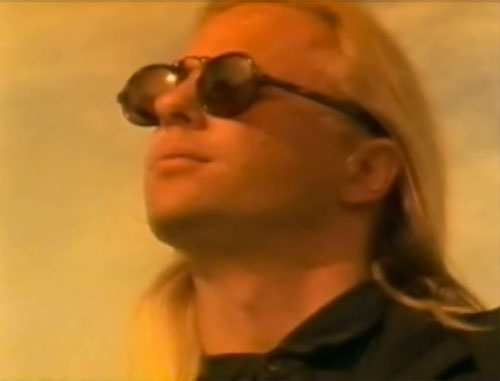
The plot of The Roller Blade Seven is all over the place, so I’ll try to give you the basic gist of things. The movie is about a maverick, samurai wielding warrior named Hawk (Scott Shaw), who is sent by priest and teacher, Father Donaldo (Donald G. Jackson), to rescue his psychic sister, Sparrow (Barbara Nickell), who’s been kidnapped by the Saint O’ffender (the always amazing Joe Estevez) who wants to have revenge over Father Donaldo because of… erm… you know what, I give up. Donald G. Jackson throws the plot to the wind roughly five minutes into the movie so I won’t waste time getting into the minor details.
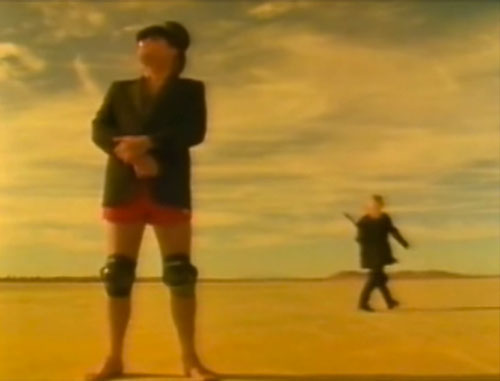
You’re better off approaching The Roller Blade Seven as inebriated as possible because this is definitely a ‘Head-Movie’. The narrative is incoherent and the editing deliberately disjointed. Scenes and dialog repeat themselves to resemble a terrible drug trip. There is even a scene early on when Hawk visits cult-stalwart Karen Black at the beginning of his journey and they take magic mushrooms together. They spend the next five minutes looking confused and hugging in between loads of mannequins in the desert.
As his journey progresses, Hawk picks up two followers — the permanently swimsuit-clad samurai warrior named Stella Speed (Allison Chase)…
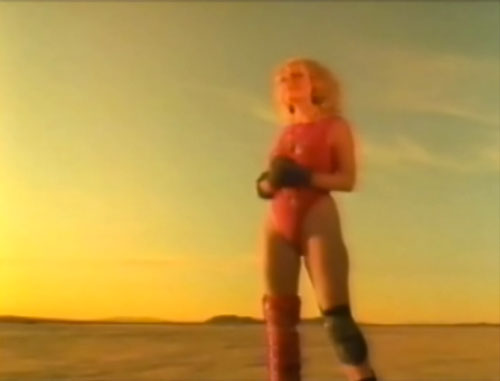
… and a Kabuki mime carrying a rubber baseball bat (Claudia Scholtz).
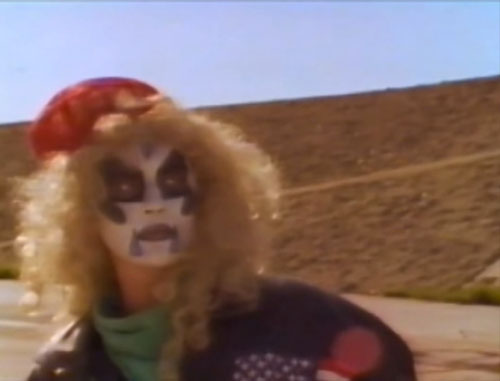
I can’t remember exactly how they all meet up because the continuity is so poor, but once they do team up the film turns into an excruciatingly long succession of poorly choreographed fight scenes against an endless array of rollerblading, acid-dropping punks that lasts for about an hour.
This on its own would be bad enough, but the thing that really pushes it over the edge is the soundtrack which flits wildly between ambient drones, harsh 80s industrial beats, soft hair metal-era rock ballads and Deliverance-esque banjo free-styling, performed by a rollerblading minstrel who shows up every now and again to confuse everyone. At times the movie resembles a ridiculous music video and if the music selections weren’t so brain-meltingly bad then they might have got away with it.
I remember pausing the movie an hour in and I sat in silence for five minutes. It felt great.
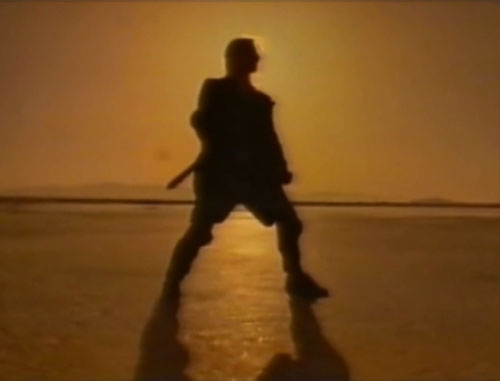
The film does have some cool ideas, though, and the cinematography is impressively ambitious. I don’t know how Jackson and Shaw got so many well-known faces to star in this thing but they use them well, introducing actors such as Joe Estevez, Karen Black and Frank Stallone sporadically and for maximum impact, usually with their own cool title sequences in case you didn’t know who they were.
The film’s climax is confusing but cool looking. Our protagonists are captured and tortured by what looks like an S&M dungeon gimp. There’s lots of bare-ass whipping and close ups of the gimp licking his leather lips. Hawk and Stella Speed embrace in their cell before they’re confronted by a rollerblading black knight.
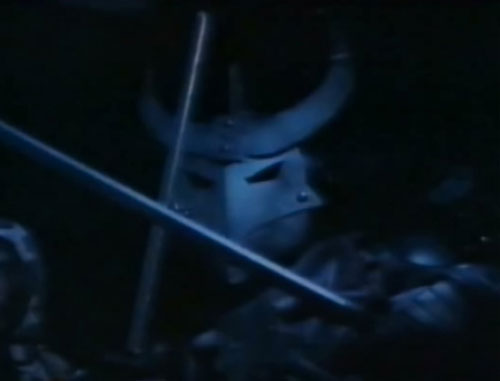
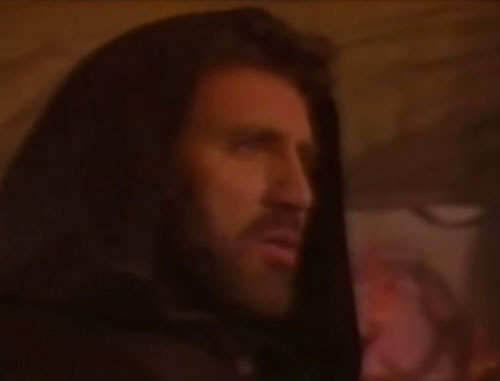
The lighting turns into heavy strobing, a girl we’ve never seen before dances in the corner of the cell, Father Donaldo fights with Frank Stallone in another room, Sister Sparrow has a snake on her head. Man, I just have no idea what’s going on anymore.
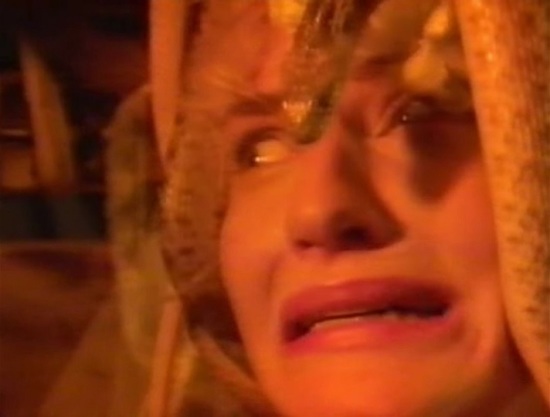
The scene cuts suddenly, away from the cell. Hawk and Stella Speed are getting married. Father Donaldo is the priest. After the ceremony, he gives Hawk a magic sword as wedding gift, telling him that it still has plenty of killing to do. Hawk gets on his motorbike with Stella and they ride away into the sunset to a soft rock score, followed by Joe Estevez. This scene repeats itself about ten times and I don’t know why.
The Roller Blade Seven is definitely a bad movie. Everything in the film was apparently improvised. In his own words, via his website, Shaw explains, “In Zen, there are no rules and no definitions. The spontaneous creative energy of the filmmaker is the only defining factor. This allows for a spiritually pure source of immediate inspiration to be the only guide in the filmmaking process.” This explains the disjointed narrative and bizarre acting, but does it excuse the quality of the film? Hell no. But I still kind of felt an affinity with it.

You see, growing up (and to a lesser extent even today) I used to make movies on camcorder. I’d hook up with some friends and we’d act out all kinds of crazy scenarios. We’d fearlessly take on any genre, overcoming our budget restrictions through sheer enthusiasm. Everything was improvised and they were tons of fun to make. It’s because of this that I understand why The Roller Blade Seven exists. It might be poorly produced, shot, edited, acted and scored, but the enthusiasm of everybody involved is infectious. Everybody is having such a good time and it’s obvious they don’t really care if you like it or not. It’s also pretty obvious that the film means an awful lot to Scott Shaw, and while I wouldn’t call the art he creates as being very good, it’s definitely unique and in its own strange way, encourages me to continue creating in spite of my own limitations.
But would I watch it again? No. Absolutely not.
Availability:
You can read more about Zen Filmmaking, and purchase a copy of The Roller Blade Seven, as well as the entire Scott Shaw filmography here: www.zenfilmmaking.com/




